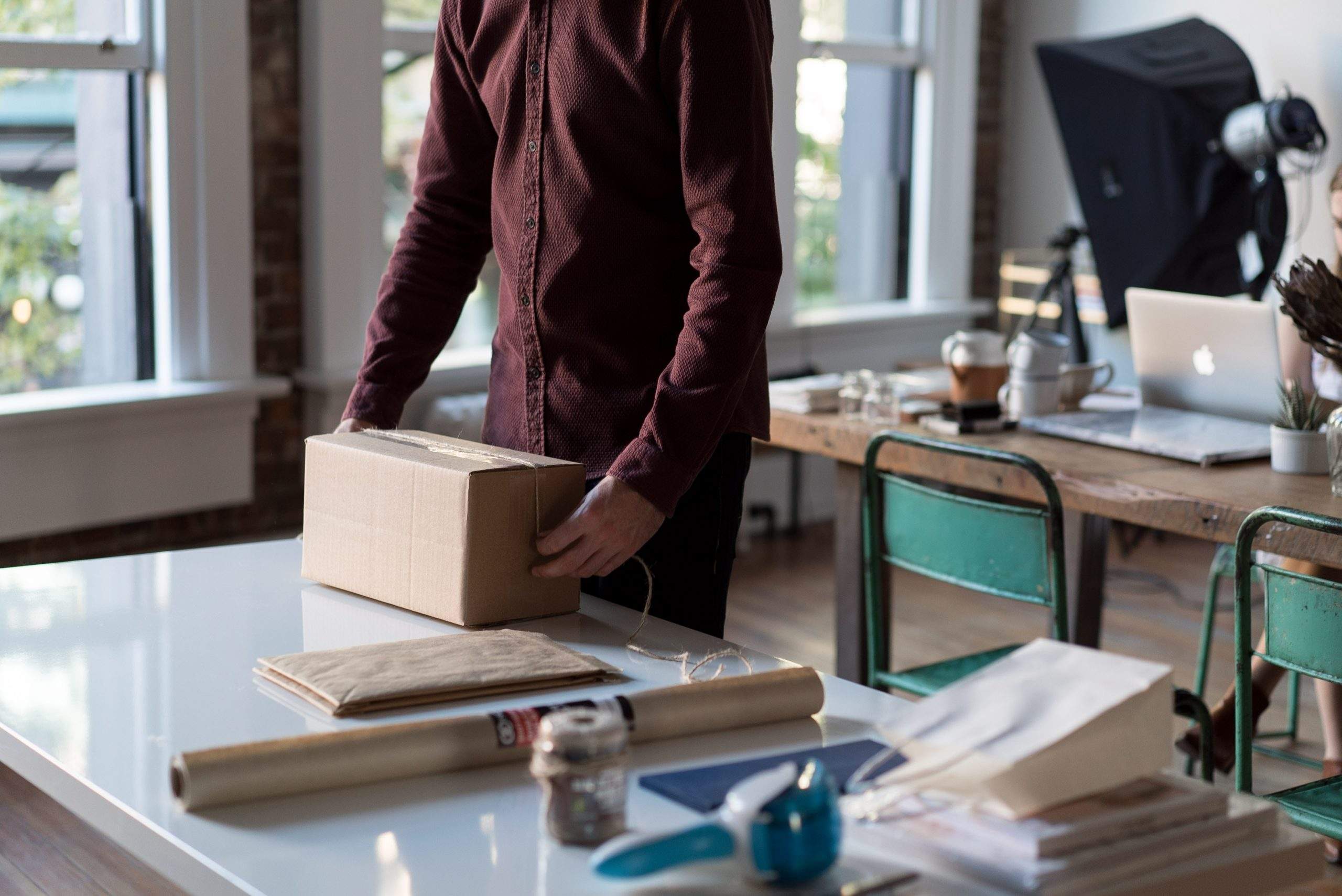Jump Ahead To:
Moving can be enjoyable, or at least, parts of it can. Opening your moving boxes is similar to Christmas morning, and putting everything in its new places can be fun. For many families, once it’s complete, the house is as clean as it ever will be until they move to their next home. What’s less fun is preparing to move. Getting everything packed up in boxes, then ready for movers takes a long time, and sometimes life gets in the way. Therefore, we’ve put together this guide on how to get packed up and ready to move, in three days or less.
Don’t Want to Pack?
We get it – that’s why we offer packing services. You can either add-on packing with your full-service move, or just get us out to pack up your stuff. We’re here to help. Anyways, on to the packing guide!
3 Top-Level Packing Approaches
Every successful effort begins with strategy. If you craft packing strategies, it’ll help you to organize your new home better. Although the options are endless, most of the good ones fall into one of three basic categories.
Zone Offense
As you pack, have a box ready for every room in your new home. Each item you decide to bring with you goes into one of those boxes. As each box fills up, tape it shut and start with a new one.
This isn’t great for cluttered or smaller homes without enough space for all those boxes but, it’s an excellent solution to disorganized rooms.
Man-to-Man Coverage
With the man-to-man approach, everyone in the house tackles one room at a time, only quitting when that room is ready for the movers. It’s an excellent option for families with younger children and can keep the energy up if you crank some music and make some fun out of it.
The Beachhead
The beachhead works best for people dealing with a more extended pre-moving period or who have a home office or other reason to keep some rooms operational longer than others.
In this approach, you choose one room to strip to the walls, packing everything. Afterward, you adopt the zone offense or man-to-man approach for other rooms, depositing finished boxes in the beachhead room until it’s full or you’re done.
12 Packing Hacks to Make Moving Faster and Easier
All of the packing hacks below work equally well for all three of the above approaches. Just choose the one that works best for your home, timeline, and household.
1. Buy Multicolored Packing Tape
It helps to know what’s in each box and where they go when you unload them. Moving boxes start to look the same after a couple of hours, and nobody’s memory is operating at total capacity when things are in motion.
You don’t have to spring for the fancy, labeled packing tape available at U-Haul and similar shops, but a five-color system can help you keep it all organized.
Use permanent markers on the tape to further organize by room. For example, yellow tape for the home office can be marked with “desk,” “bookcase,” and “files.” Just write the label on at least three sides so it’s visible without turning the box.
2. Use Your New Floor Plan to Empty Your Old Home
One of the worst moving experiences is having one of the new main rooms full of boxes and furniture for weeks because you unloaded everything there and only have time to unpack slowly. Avoid that by knowing ahead of time where everything is going.
At the beginning of your moving preparations, print out a floor plan of your new home. Identify the rooms and what their purposes will be when you move in. As you pack, keep the floor plan handy and use it to determine where each item will eventually live.
3. Apply the 3-Boxes Method
Come to each room you want to pack armed with three large boxes. Use one for things you intend to donate. Use another for things you’ll throw away. Whatever’s left goes in the third box.
This system helps you triage your belongings so you only pack and bring the things that really bring you joy. You can do this as initial triage, then move items from your “keep” box into the boxes where you’ll eventually store them in to move.
Alternatively, you can keep various boxes on hand for stuff you want to keep, each for a different destination in your new home.
4. Use Garbage Bags for the Closet
Use this process for all the clothes hanging on the closets of your home:
- Gather together (still on the rail) enough items to fill a single handful if you grab them by the hook.
- Pull these items off the hook together.
- Bundle them by taping the hooks together with packing tape.
- Pull a garbage bag over the top, slipping down the open end until it covers the clothes
- Tear a hole in the bottom of the bag and slip the hooks through.
Keep doing this until all your clothes are protected and easily portable. For folded clothes, linens, and towels you aren’t using to pad fragile objects, or items you’re just leaving in their drawers, simply throw them in a cinching bag and tie the bag shut.
5. Fill Your Pots and Pans
Kitchen cabinets and drawers are full of small objects like spice jars, can openers, measuring spoons, and various kitchen gadgets. They’re essential, oddly shaped, and sometimes sharp. They can be a real challenge to pack safely in ways that protect them for the journey ahead.
Luckily, some of your cabinets and drawers are full of cooking pots. Put those smaller kitchen items in the pots, pu ton the lids, and tape them shut. For pots without tops, tape a plastic plate or metal pie tin over the opening.
6. Have Placeholder Boxes
There comes a time in every move when someone notices something like a necktie in the Tupperware drawer. It’s tempting to jam it into the kitchen stuff boxes so you don’t have to slow down, but that just makes you slow down on the other side of the move when you’re tired.
Solve this by keeping a placeholder box with you in every room you pack. Any item that doesn’t fit in the room you’re packing for goes in the placeholder box to be packed in where it belongs. Depending on the scale of your household, this can be one box or several boxes for different categories.
7. Take Lots of Pictures
First of all, you’ll want some selfies and other mementos of your last day in your home, but that’s just where the usefulness of photo skills in moving starts. Consider some of these tips and tricks:
- Take pictures of the backs of every piece of electronics that plug into other things, like your TV and desktop computer. Use them for reference when you set them up in you new home.
- Take pictures of each box before closing the lid. Print them out and tape them to the top so you know what’s inside.
- Take pictures of the rooms in your new home and use them while planning where to put things.
- Take pictures of your cabinets, closets, and drawers before you empty them. They might not exactly match the configuration of your new home but can serve as a guide and starting point.
- Take pictures of any fragile valuables to provide to your insurance company if something goes wrong during the move.
We’re sure you can come up with another few ways to make your move easier using pictures. Take them early and often.
8. Pack Up the Kitchen Last and Unpack It First
A kitchen is the heart of your home. It has the things you’ll need and miss the most when they’re packed away and inaccessible. For that reason, you should pack it last the night before or the morning of your move and unpack it first when you reach your new home.
That said, kitchens have a lot of stuff in them, so you should pack in the following order:
- Pack away any long-term storable food and occasional-use tools you won’t need before moving several weeks before your date.
- Plan your menu for moving week carefully and then pack away every tool, item, spice, and nonperishable food item you won’t need to fulfill that meal plan.
- Everything else you pack as late as possible.
Since you’re in the kitchen, spend some time in the pantry, fridge, and freezer a month or two before your move date. Plan your meals for the interim weeks to eat as much as possible so you don’t have to pack and move these items.
9. Wrap Breakables in Towels
Use towels, linens, sweatshirts, blankets, and other cloth items to protect your plates, glasses, framed art, and other fragile treasures.
For substantial fragile items like large glass-framed pictures and television sets, keep them unboxed and move them in a car seat, supervised by an adult involved with the move itself.
10. Create a Supply Station
It’s frustrating to stop your progress to hunt for the right tools to do the job. This is especially true of packing to move since the process is already fraught with emotion and stress.
Prevent this by creating a supply station with a full set (plus extras) of boxes, marking pens, packing tape, scissors, twine, garbage bags, cleaning supplies, and anything else you might need at any stage of the packing process.
If you start to run low on any given item, put it on the to-do list for the next time you leave the house. The fewer unnecessary trips you take downstairs or out to the store, the better.
11. Use Plastic Wrap
It’s possible to use kitchen cling wrap for this, but you can pick up a sizable spool of heavy-duty, self-adhesive plastic wrap at most moving or home improvement stores. This stuff has dozens of uses, such as:
- Wrapping dresser and desk drawers with the contents still inside for easy transportation
- Bundling long, unwieldy items like sports equipment, yard tools, or curtain rods
- Wrapping drawer organizers from the bathroom and kitchen so the contents stay in place
- Securing bottles that leak a little
- Holding protective blankets in place over the things they’re supposed to protect
- Forming a protective layer over durable things you don’t want to be covered with dust
- Keeping the doors and drawers of desks, wardrobes, and similar furniture closed while you move them
- Securing power cords and wires
The first time you buy some plastic wrap for a move is life-changing. Once you try it, you’ll never go back.
12. Pack an “Open Me First” Box
Pack a medium-sized box, or a small box for each household member, with valuable and comfort items you’ll want right away, like a change of clothes, favorite stuffed animal, the book you’re reading, and notes on new utilities. Even in the middle of the chaos of moving, this will give you a few things to keep your spirits up and things moving smoothly.
Final Word: Beating the Moving Day Blues
Moving can be as or more stressful than a significant breakup, according to research by E.ON. It can be hard to sleep, eat well, and see to other aspects of self-care, but it’s essential. Here’s a quick guide with a few insights on selecting movers and comparing companies that might help with that potential stress.
Additionally, the better rested you are, the faster you’ll be able to complete all the tasks and chores associated with moving house. And the quicker you do all that, the sooner you’ll be resting in your favorite chair at your new home.
A handful of other considerations can help with your quality of life on moving day:
- Pack an overnight bag and toiletries so you have the clothes and tools to last a few days before things get unpacked.
- Bring a cooler to transport stuff from your fridge. Add some water bottles too. Moving is thirsty work.
- Have a plan for kids and pets. These agents of chaos should spend time with a favorite family member while the heavy work gets finished.
- Keep your cords handy so you’re not worried about charging your phone.
- Book a hotel room, especially for an out-of-town move, so you have a clean, working oasis in the middle of everything.
Other Packing Guides
We’re movers, so of course we have a lot of packing guides. See what else we’ve written on the zen of packing:
How to pack liquor and wine bottles
8 things that are cheaper to replace than to pack
How to pack fine china for moving
How to pack silverware for moving
How to pack pots & pans for a long-distance move
What and how to pack your first college dorm
- How Much Do Movers Cost? Moving Company Costs Explained. (Updated 2024) - July 9, 2024
- How to Pack for a Move in Three Days (Or Less!) - July 9, 2024
- How to Pack for a Move (Without Going Crazy) - June 26, 2024




